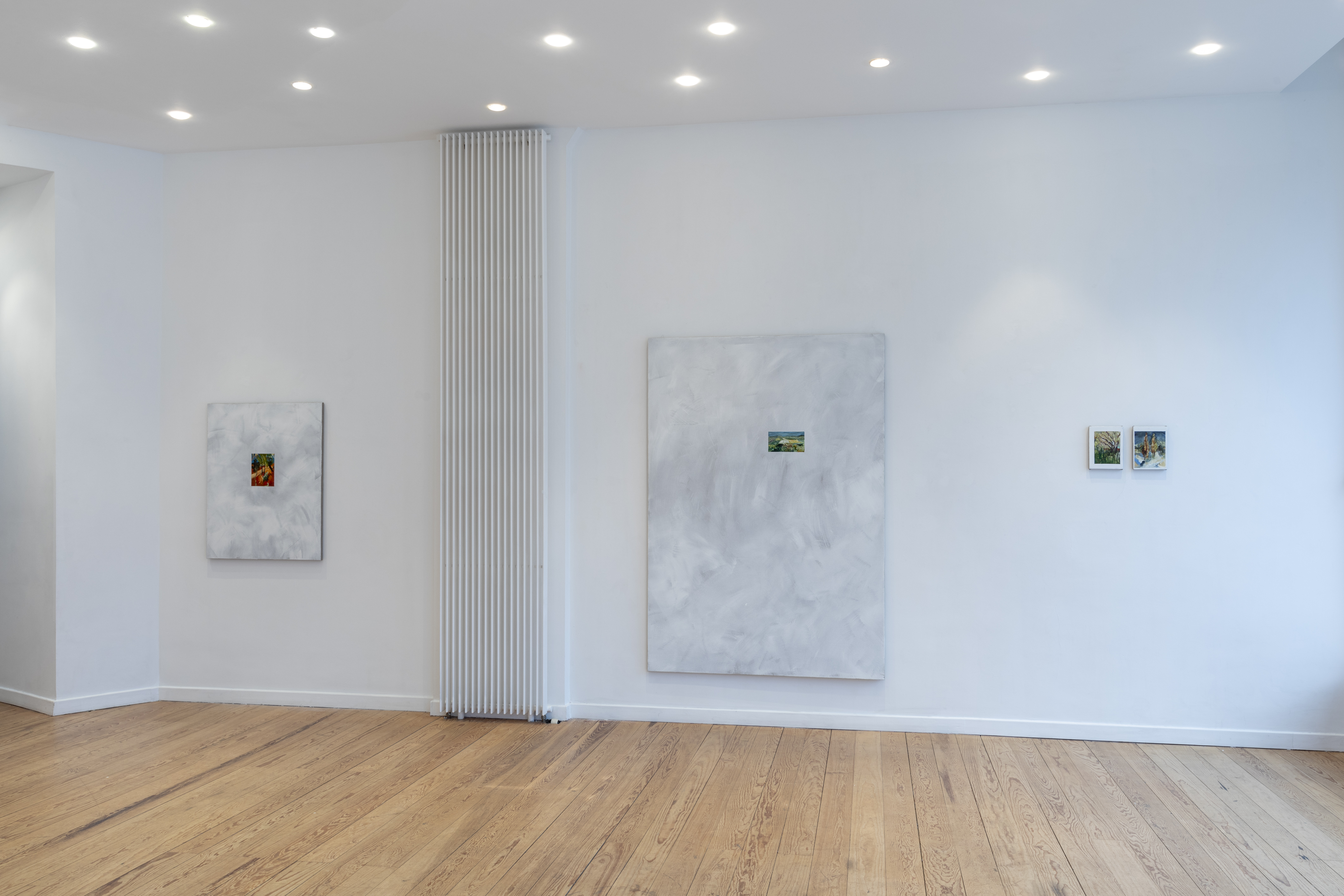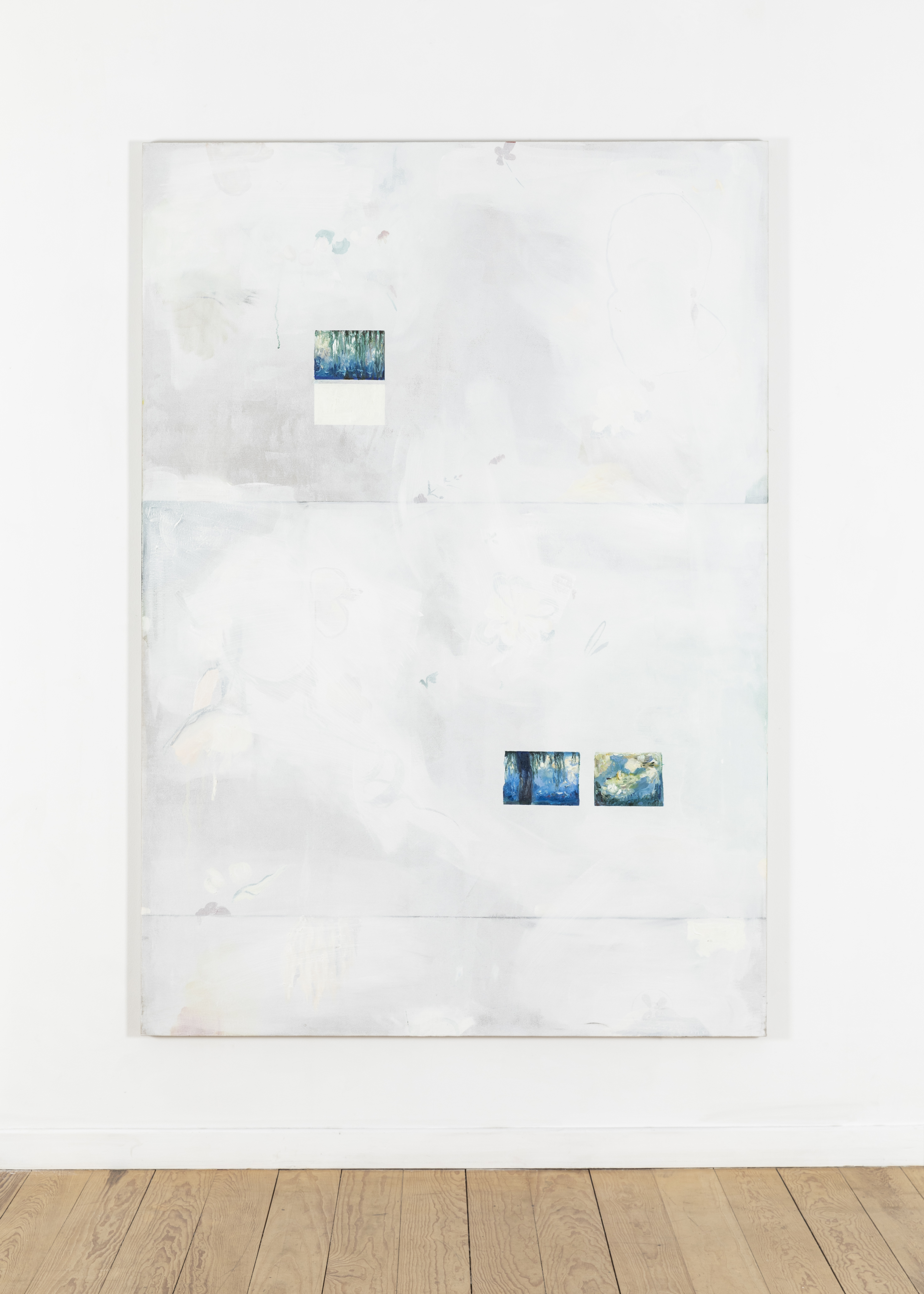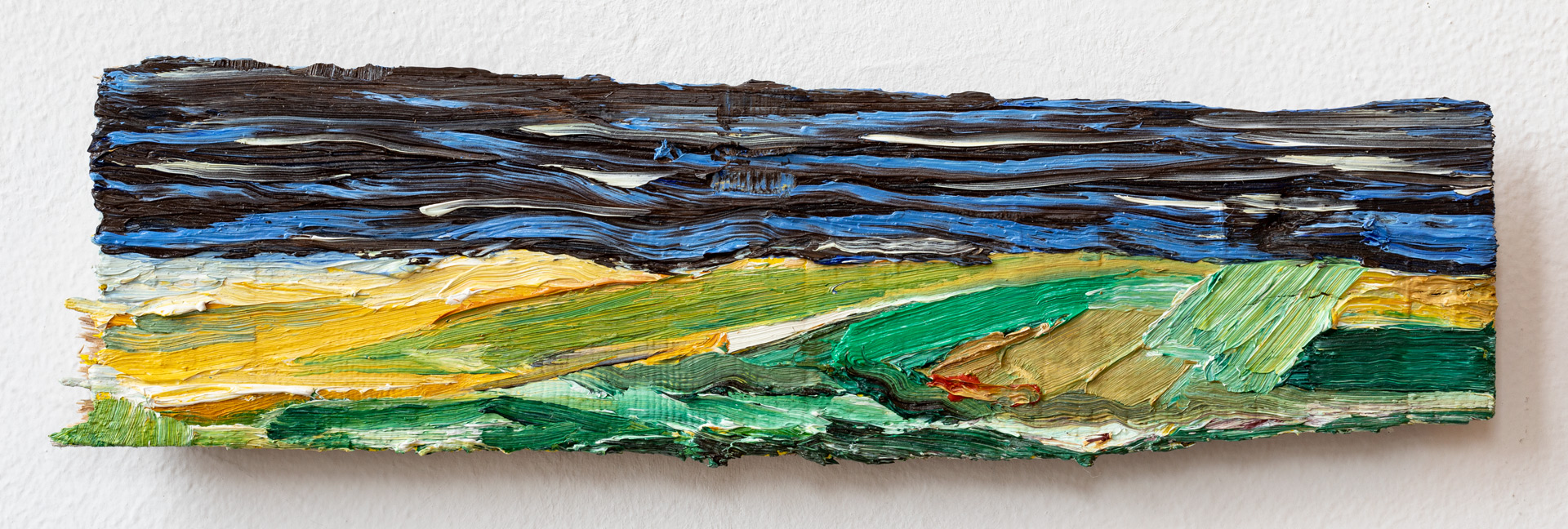Nycthéméral
Sébastien Bonin
January 10th - February 23rd, 2019
Michel Rein, Brussels
Installation views







About
« The most important is not where you take things from but where you bring them. » (Jean-Luc Godard)
Sébastien Bonin’s painting is all about references, encounters and plays with various media. Mid-way between abstraction and figuration, the artist’s latest works revisit pieces by famous painters in a desire to “paint what painters see”. Alluding to the natural cycle of days and nights, the Nychtéméral series is exhibited at the Michel Rein gallery of Brussels from January 10 to February 23, 2019.
The texture of his large formats is made of primer (the first layer applied on a canvas) mixed with water. His loose gesture points to abstract expressionism while recalling the esthetics of whitened shop windows. In the middle of a ghostly trace that blends in the gallery wall, a rectangle of paint stands out structuring the canvas surface and opens on a familiar landscape. A veduta – the large vistas we see in some Renaissance paintings- comes to interfere with the abstract part of the painting and proposes a figurative escape. In these postcard inserts – also exhibited per se in the show-, Bonin reproduces landscapes by impressionist or post-impressionist painters he found in art books. The artist selected the reproductions by contrast, in that, although he chose major painters, he immediately crossed out overtly famous pieces and gave preference to minor works.
Bonin deleted all traces of mankind from these “second degree reproductions” (characters, homes, objects etc.) and left landscapes only. In a similar spirit of humility and anonymity, he used the same art books to randomly pick titles for his paintings, making them interchangeable and thus questioning the
original nature of the artwork.
Bonin’s painting somehow resists viewers who are required to alternate between close view and distant perspective on the work (for lack of being able to do both at the same time) and move around it in a way that challenges the usual appreciation of these large scale works. The minute gesture of the small figurative paintings catches our attention and creates a dialogue with the abstract part of the canvas, although they cannot be simultaneously appreciated. In the end, Nycthéméral is the rhythm that paces the (alternate) movement of the painter.
Barbara Cuglietta (December 2018)

